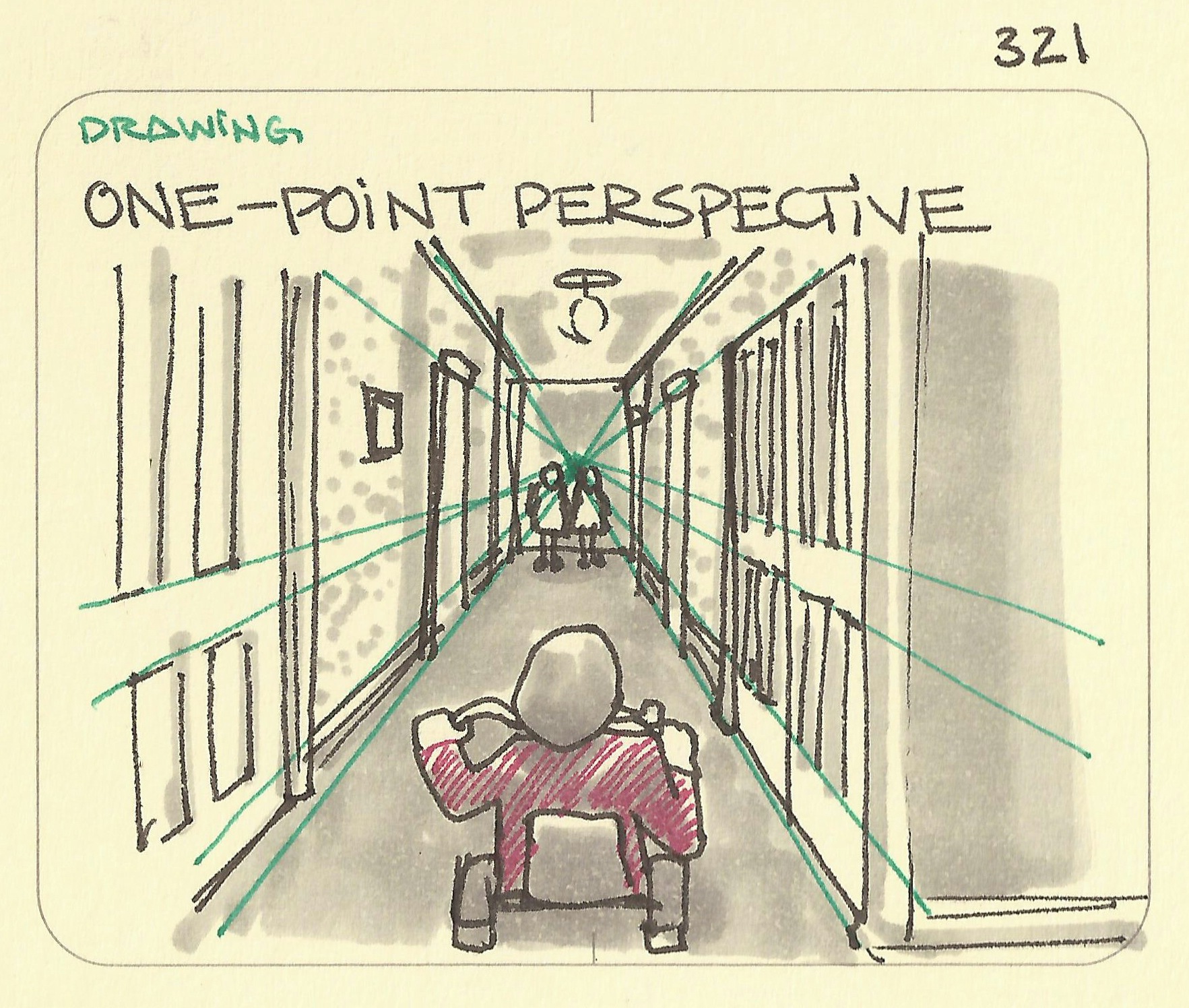One-point perspective

- Copied!
👇 Get new sketches each week
Perspective can be tricky to get your head around. In drawing and art, using perspective creates the illusion of three-dimensional space on a flat surface. The simplest form to understand is one-point perspective. You will have experienced one-point perspective when standing in a corridor or looking down the center of a street. If you continue the parallel lines of the walls and ground toward the center, they would appear to converge at a central point in front of you at eye level, known as the vanishing point. When real-life features are parallel like this, you can use a central vanishing point as a guide to help capture the scene accurately.
The simplicity of one-point perspective makes it impactful. Leonardo Da Vinci, a personal hero of mine, famously employed one-point perspective in his painting of the Last Supper in the Santa Maria delle Grazie monastery in Milan. The vanishing point, carefully placed behind Jesus' head, draws the viewer's attention to the main subject of the scene.
Turns out Kubrick is pretty handy at one-point perspective .

